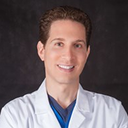Thank you for your question. I understand you had Asian eyelid surgery done one day ago, wherein no skin or fat was removed. However, you’re concerned about the swelling and appearance of your eyelids, and you’re wondering if your procedure went wrong.Just to tell you a bit about myself and my training, I’m a Board-certified cosmetic oculofacial plastic surgeon, practicing Manhattan and Long Island for over 20 years. Asian eyelid surgery is one of my specialties so I can certainly help you by giving you some perspective and guidance with what you’re going through now. Keep in mind, however, that with the absence of an actual physical assessment, and relying solely on photos, my opinion is still one that is limited by the information available.Based on your description, it sounds like you had non-incisional Asian blepharoplasty. The term “non-incisional” is slightly inaccurate because even though there is no removal of fat or skin, tiny openings are still created in the skin, through which a suture is passed. The suture engages the levator muscle, which in turn is responsible for lifting the eyelid and creating a crease.Looking at your photos, your creases seem very well-defined, so you had a non-incisional Asian blepharoplasty which resulted in a significant amount of swelling afterwards. It’s also important that you maintain a sense of connection with your doctor, because if you made the decisions to have this procedure done by your doctor, it seems a little bit premature to lose faith in less than 48 hours since you had the procedure. Keep in mind that regardless of how minimally invasive a procedure was done, and regardless of the methods employed such as local anaesthesia or LITE™ sedation, eyelid tissue is still very sensitive and delicate, and very prone to swelling especially in the first 48 hours after the surgery, which is the peak of the swelling. In your case, yes, the eyelid asymmetry, amount of swelling, and the inversion of the eyelashes is, in our practice, somewhat uncommon, but it does not automatically mean that your doctor performed the surgery incorrectly.I think it is also very important that you follow all post-op aftercare instructions as closely as possible. In our practice, we advise our patients to use cold compresses (20 minutes on, 20 minutes off) for the first two days, including the day of the surgery. We also advise them to move around and open and close their eyes to allow the fold to develop naturally. We’ve observed that patients who’ve had eyelid surgery, particularly Asian Eyelid surgery, tend to do what I call “splinting”, which means that they won’t open their eyes all the way because they’re afraid of damaging their eyes. I encourage you to open your eyes fully and look up from time to time.I recommend in the meantime to make a follow-up appointment with your doctor, and give time for the swelling to settle. The space between the eyelid margin and the crease has a tendency to swell quite a bit, especially in the beginning. Low grade swelling has been known to last for about 2-3 months, but in some rare cases, swelling can last for up to a year, so there’s certainly variability to this. However, as long as the swelling is going in the right direction and your eyes are slowly looking more aesthetically pleasing, then it should be alright. Try to have a conversation with your doctor about your procedure. Try to find out about the specifics of what your doctor did so that you can understand what you’re going through and to alleviate any worry or anxiety you may have over your situation.I hope that was helpful and I wish you the best of luck!This personalized video answer to your question is posted on RealSelf and on YouTube. To provide you with a personal and expert response, we use the image(s) you submitted on RealSelf in the video, but with respect to your privacy, we only show the body feature in question so you are not personally identifiable. If you prefer not to have your video question visible on YouTube, please contact us.
